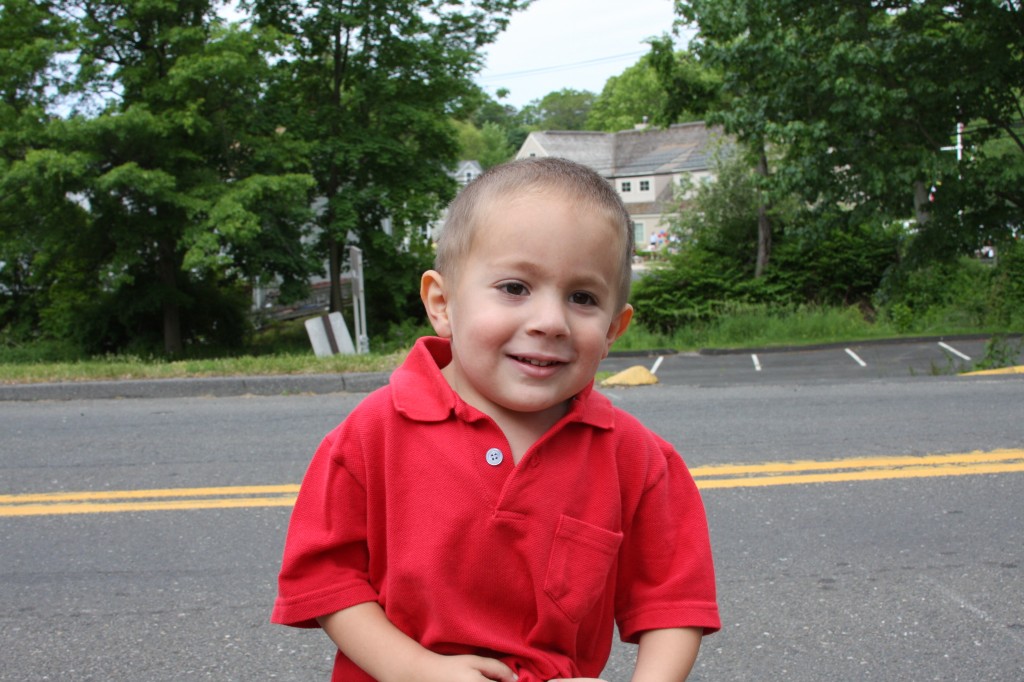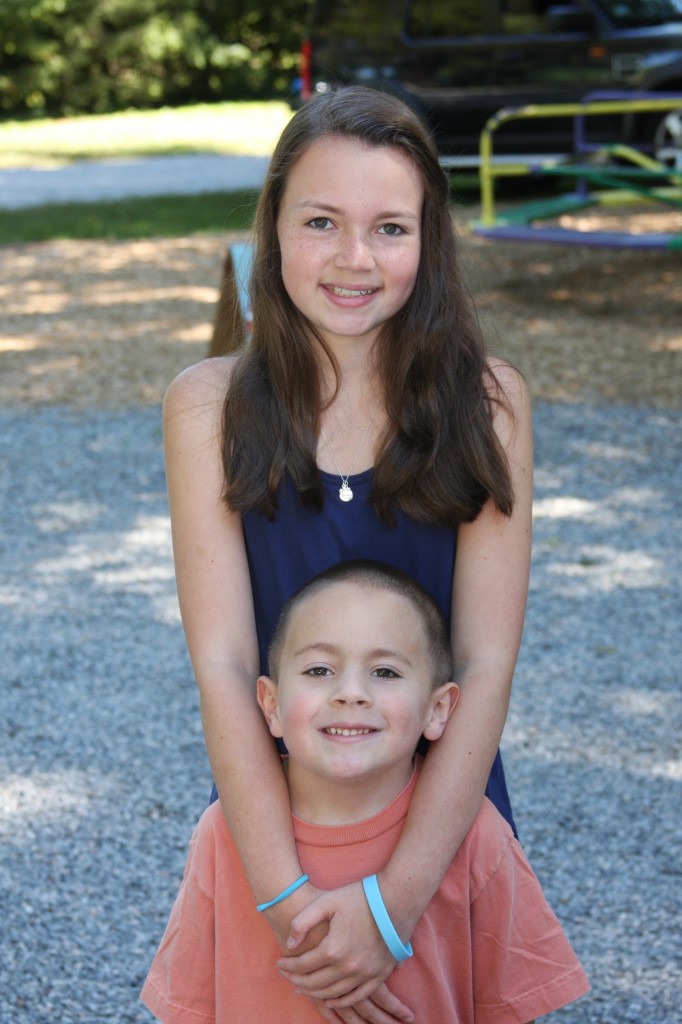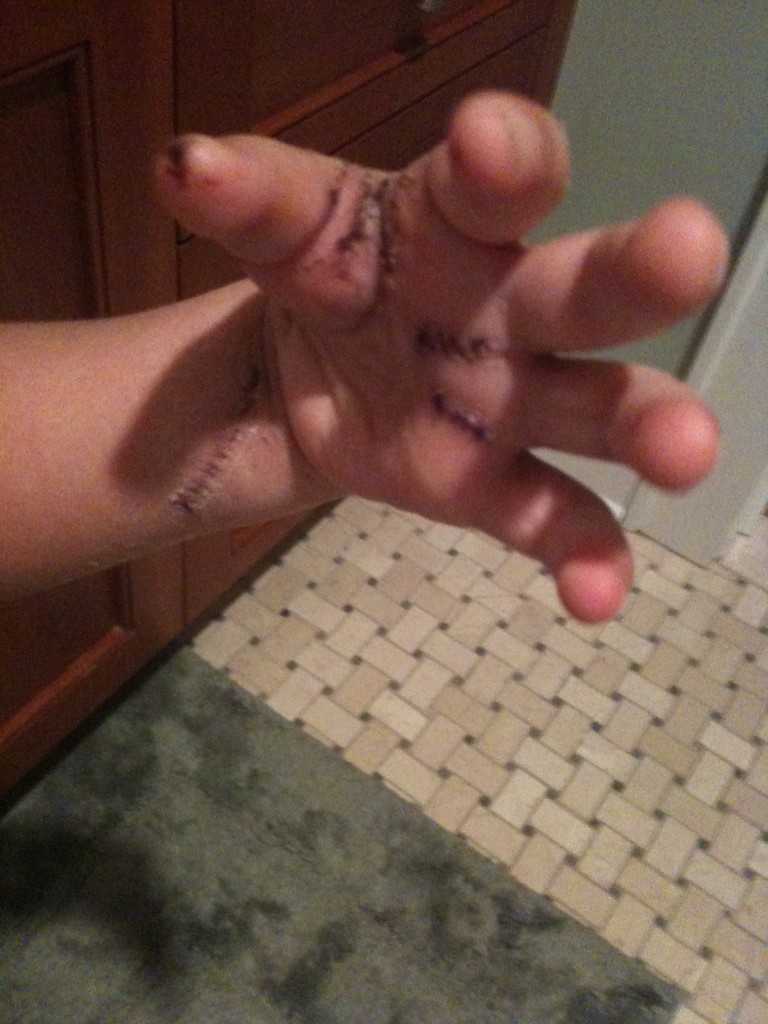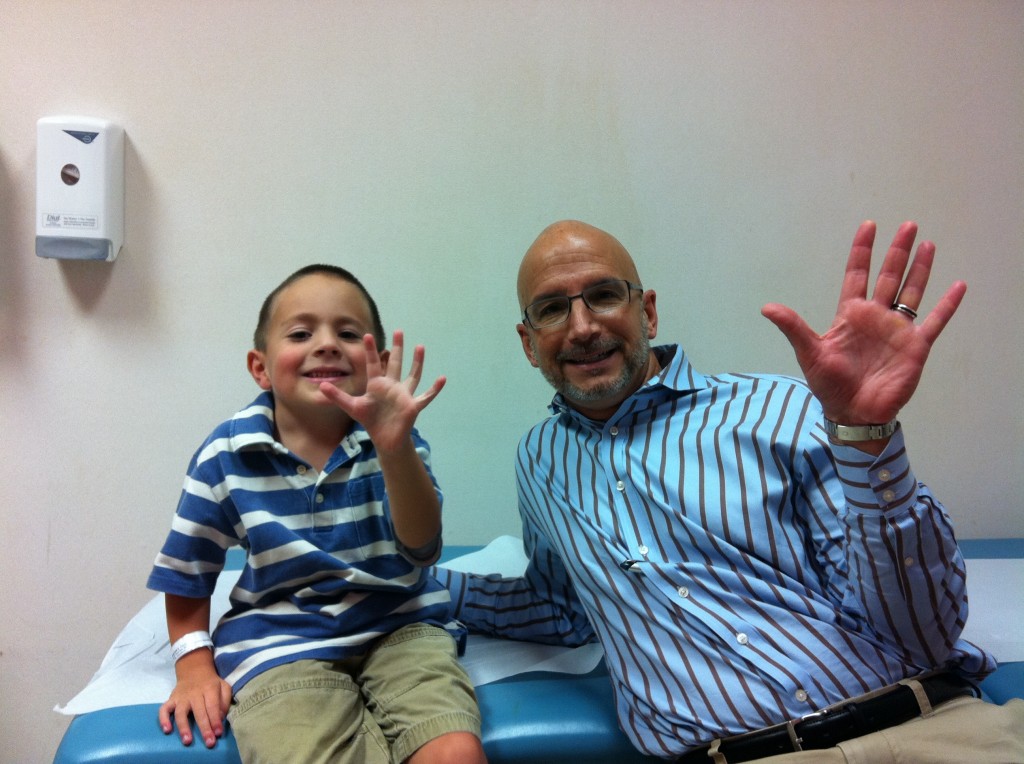Last Wednesday we took Tristan to Shriners Hospital for his checkup with his spine and hand team. He goes every 6 months for monitoring, in particular to make sure the tilt of his head has not increased. His spinal deformity consists of hemivertebrae (vertebrae that are only partially formed) and vertebral fusions (ones that are stuck together). This combination results in his case in something known as a disorganized spine.1
As an infant his head was quite crooked on his neck.
During the ensuing months, the tilt measured 25-30 degrees. The severity of the situation increased and Dr. Randal Betz told us if the curve progressed we would have to intervene with surgery to fuse the vertebrae in a straight position. His neck growth would be halted; while his body would mature his neck size would be that of a toddler. He would have no mobility in the neck after the surgery. We prepared ourselves for hearing the news.
We continued to monitor his growth. As he began to sit, and then walk we watched as the neck grew. His two hemivertebrae were growing in such a way that they were balancing each other as he grew. Had the pizza slice-shaped wedges been wide on the same side, surgery would have been inevitable. Because they were on opposite sides, this “z-curve” worked to his advantage. By the time he was a toddler his head was straighter.
Though his neck is short, and always will be, it has continued to grow. Physical therapy since birth has kept his muscles stretched and strong. Weakness on one side of his body is imperceptible.
This week his x-rays showed that the tilt once at 25-30 degrees is now less than 8 degrees. His eye sockets and lower jaw are almost even. The three points he has mobility in his neck are stable and should be sufficient to prevent extraordinary wear. He’s doing as well as he possibly can be, given his anatomical issues.
We next had Tristan’s appointment with his hand surgeon. He, too, was pleased with the results of Tristan’s three-pronged surgery last March (you can read about Tristan’s hand deformities here including his lack of a flexor pollicus longus muscle on his left side which makes his thumb unable to bend ). A flexor digitorum superficialis tendon transfer, ulnar collateral ligament reconstruction at the base of the thumb, and a 4 flap z-plasty of the thumb index web space were all successful. The large scar on his wrist is fading and it’s hard to believe it looked like this.
Here he was this week showing that hand with his upper extremity surgeon, Dr. Scott Kozin.
His left thumb will never bend, and the hand will be weaker because of it. He is a lefty, so it does affect his fine motor skills. But we continue to do hand therapy with him and it’s made a world of difference. Each Monday and Tuesday this 5 year-old is doing his therapy sessions at 6:30 A.M. before he heads off to kindergarten. That smile is always on his face. He never complains. He got a great report and we left Shriners happy and exhaling for another six months. We saw many friends there and it’s always like a family reunion. We’ve been through a lot together and we are grateful for their continued support and care.
I do want to mention one thing we learned at this visit. Shriners specializes in orthopaedic and spinal cord injuries; when children have traumatic spinal injuries, this is where they go. Tristan’s spinal surgeon told us there are two activities that they recommend children avoid because the risk of spinal injury is so great (this is for all children, even who do not have any defects): trampolining and riding four wheelers (ATVs). Those two activities have such a rate of injury that the surgeon does not allow his own children to participate in them. I share that information because it was new to me; we do not own either piece of equipment because Tristan is not allowed to do either but we were not aware that those activities were so dangerous to all children.
- These defects were not visible on ultrasound (the bones are too small during development and are not yet fully calcified) prior to his birth and it is not a genetic defect, so amniocentesis did not reveal the problem. It took months and many specialists to get a complete diagnosis on what his problems were. [↩]






 Link to Twitter
Link to Twitter